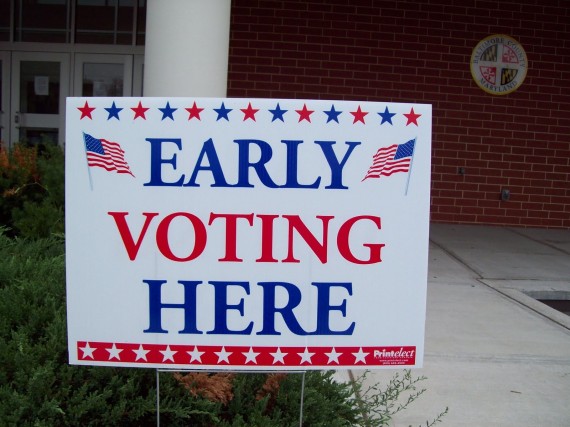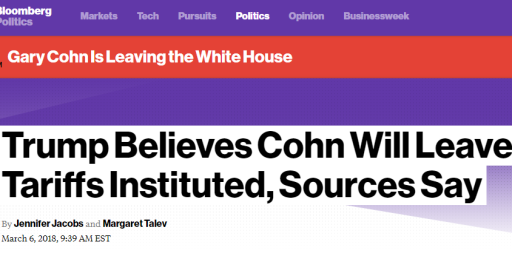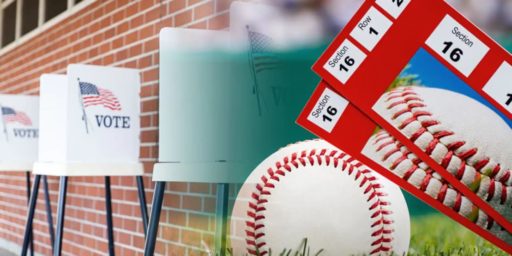Which Party Is Benefiting From Early Voting?
Early numbers seem to suggest that it depends on which state you're looking at.
As we head into the final 60 hours of campaigning for the 2014 midterms, well unless you count the campaigning that will likely take place in Louisiana and (probably) Georgia due to expected Runoff Elections, attention is turning to early voting in some of the battleground states that are likely to help decide the question of who controls the Senate when the 114th Congress convenes in January. We can’t know, of course, who the people who have voted early in the states where it was allowed might have voted for, of course, and polling on the early voting phenomenon still doesn’t seem to have reached the point where it can be called reliable. However, most jurisdictions where early voting is allowed do keep track in some ways over whether the persons making use of it are registered with one part or the other, or neither, so that measure has been one that political pundits have been using to try to figure out what might be going on in with a group of voters that are becoming increasingly important. This year, the numbers that we’re seeing are a bit mixed, but depending on what state you’re looking at, it appears that there some good news developing for the Republican Party, but the numbers are not consistent enough to say anything conclusive.
On Friday, for example Nate Cohn at The New York Times looked at the available data and concluded that the available numbers seemed to be better news for Democrats than Republicans:
Democratic efforts to turn out the young and nonwhite voters who sat out the 2010 midterm elections appear to be paying off in several Senate battleground states.
More than 20 percent of the nearly three million votes already tabulated in Georgia, North Carolina, Colorado and Iowa have come from people who did not vote in the last midterm election, according to an analysis of early-voting data by The Upshot.
These voters who did not participate in 2010 are far more diverse and Democratic than the voters from four years ago. On average across these states, 39 percent are registered Democrats and 30 percent are registered Republicans. By comparison, registered Republicans outnumbered Democrats in these states by an average of 1 percentage point in 2010.
If they hold up, these numbers could be good news for Senator Kay Hagan’s efforts to hold onto her seat in the Tarheel State, and Michelle Nunn’s effort to turn an open seat currently held by Republican Senator Saxby Chambliss, who is retiring at the end of the year. Indeed, the better that these two, or any other Democrat for that matter, do in bringing out African-Americans, other minorities, and younger voters, the better they may be able to counter the expected Republican-tilted group of voters likely to show up on Election Day. Whether or not that will be enough to win remains to be seen, of course, and pollsters seem unsure about how to factor early voters into their final polling. However, if Democrats are looking for good news as we approach what is likely to be a brutal Election Day, they can find at least some solace and hope in these numbers. However, the data that Cohn is looking may not be telling the whole story.
For example, one day after Cohn posted his piece about Georgia and North Carolina, the Times noted that early voting data from Colorado, where Republicans are hoping to unseat both Senator Mark Udall and Governor John Hickenlooper, seems to be very favorable for the GOP:
Republicans are blowing out Democrats in Colorado early voting, the secretary of State there says.
According to the Associated Press, 104,000 more GOP voters have taken advantage of early voting in Colorado than Democrats.
(…)
The AP said that 41 percent of the 1.1 million early ballots were from Republicans, with roughly a third coming from Democrats and a quarter from independent voters. Colorado’s voters are basically evenly split among the three groups.
Republicans said those results showed how strong a position they were in, after the GOP has tried to modernize its get-out-the-vote efforts on social media and other platforms.
Older voters – more likely to side with the GOP - have voted early in bigger numbers, and younger Republican voters have even outvoted their Democratic counterparts.
There seems to be similarly favorable data coming from Florida, where the big race on the ballot is the Governor’s race between Republican Governor Rick Scott and former Governor, and former Republican turned Democrat, Charlie Crist:
Almost 2.8 million Floridians have cast early and absentee ballots so far, and Republican returns are still ahead of Democrats, who have been in slow-motion catchup.
GOP lead over Democrats: 133,521, or 4.8 percentage points as of this morning. Yesterday’s lead: 134,910 or 5.3 percent.
While Democrats can rightly boast they’re closing the gap, the question lingers: Is it enough? Probably not. Republicans’ lead could be cut to less than 4 percentage points by Election Day, according to an extrapolation of the past five days’ voting rates. That could be a vote margin of more than 128,000 in Republican’s favor. Again this is an extrapolation based on current rates. This analysis is conservative both in its mathematical assumptions and, incidentally, in its political outcome because it shows Republicans doing rather well.
This weekend could easily throw the averages more in Democrats’ favor. This is the last weekend of in-person early voting, when Democrats have a chance to flex their more than 455,000-voter advantage. This is the time to see if Souls to the Polls, when African-Americans have flocked to vote after church, will really make a difference.
As I said above, we can’t be sure who these early voters are actually voting for since the ballots are secret. Party affiliation does provide a good clue, though, and in that regard, there seems to be as much good news for Republicans as for Democrats at the moments. Of course, it’s the Democratic candidates who need to be most hopeful because of the fact that Republicans are generally going to be more likely to show up on Election Day in midterm elections to begin with. Given that, perhaps candidates like Kay Hagan and Michelle Nunn are viewing the early voting news positively. If I were Mark Udall, John Hickenlooper, and Charlie Crist, though, I’d be slightly concerned.







Is there a reason to believe there should be a nationwide pattern? It seems to me that the state-by-state demographics of early voting are likely to be more revealing than the horse race aspects.
State analyses:
Louisiana
North Carolina
Colorado
Iowa
Georgia
Mark Udall is more than slightly concerned. I think it’s very likely that Gardner unseats him, which means the NSA will have one less Senator up their butts, well…unless you think Gardner is going to continue Udall’s anti-mass surveillance campaign.
And then there’s the matter of Gardner portraying himself as a moderate. It may be enough to get him into the senate, but if he’s seen with Ted Cruz’s tail in his hand at any point during his term, good luck playing that during his re-election attempt.
Hickenlooper is a strange one. If he believed in negative ads, at all, he’d be killing Beauprez. I mean, Beauprez’s a birther. Why in the hell would we put him in the governor’s mansion?
I think how good the numbers look depends more on whether the early voters are new voters are normal Election Day voters voting early. If these numbers reflect more a shift from Election Day to early then it’s hard to predict.
I think the Colorado election is still a reflection of the gun control law passed and then signed by Hickenlooper.